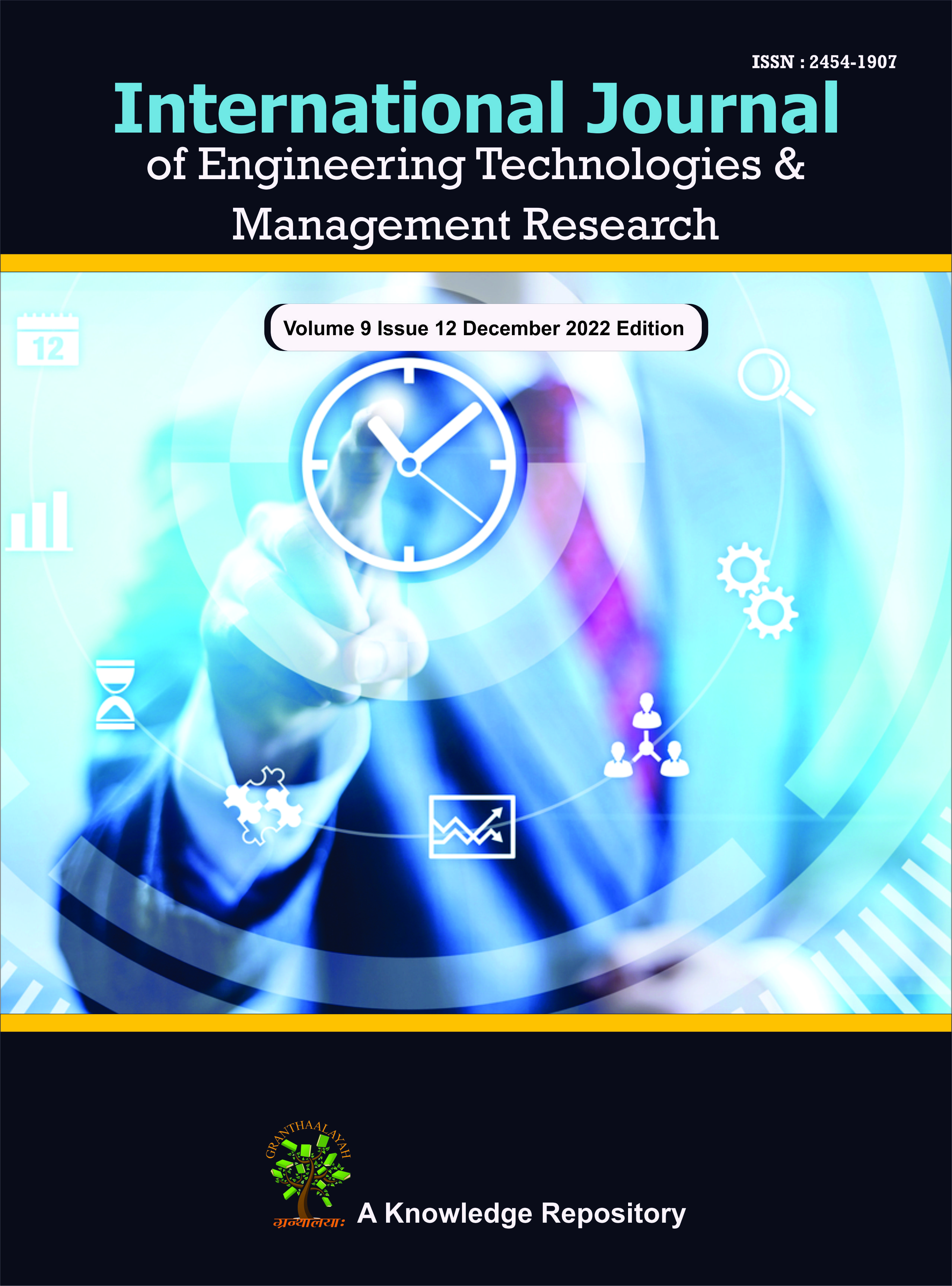INTELLIGENT MOTION-ACTIVATED LED SYSTEM USING CONVOLUTIONAL NEURAL NETWORKS
DOI:
https://doi.org/10.29121/ijetmr.v9.i12.2022.1597Keywords:
Intelligent, Motion, Led, Convolutional Neural Networks, DetectionAbstract
The LED Light Control System using Motion Detection focuses on the development of an intelligent, energy-efficient lighting solution suitable for home automation, security, and public spaces. The project aims to design a system where LED lights are automatically activated based on human motion, detected through a Convolutional Neural Network (CNN) model. By leveraging deep learning techniques, the system offers high accuracy in distinguishing between human presence and irrelevant movements, thus enhancing operational efficiency.
The primary objective of this project is to minimize unnecessary energy consumption by ensuring that LED lights are only activated when needed. A real-time camera feed is analyzed by the CNN model, which identifies motion patterns and triggers the LED control circuit accordingly. The system is designed to perform reliably under various lighting conditions and environments, ensuring robust detection performance both indoors and outdoors.
The report provides a detailed explanation of the hardware setup, CNN model architecture, training process, and integration of the motion detection module with the LED control system. It also covers component selection, software development, and testing methodologies. Special attention is given to energy management, system latency, and false-positive minimization to ensure an optimal balance between responsiveness and power saving.
In conclusion, the LED Light Control System using Motion Detection demonstrates the practical application of deep learning and modern embedded electronics to create a smart, eco-friendly lighting solution. The project highlights the potential for future enhancements, such as multi-object tracking, adaptive lighting based on motion intensity, and cloud-based control for smarter energy management and greater user convenience.
Downloads
References
Brown, S., & Patel, K. (2019). Limitations of Traditional Pir Sensors in Modern Applications. IEEE Sensors Journal.
Chen, F., & Zhao, M. (2020). Energy-Saving Potential of Intelligent Lighting Systems. Renewable and Sustainable Energy Reviews.
Chollet, F. (2017). Deep Learning with Python. Manning Publications.
International Energy Agency (IEA). (2019). Lighting Energy Efficiency Roadmap. IEA Report.
Kim, H., & Park, J. (2021). Energy-Efficient Smart Lighting Using Motion Detection and Machine Learning. Journal of Green Technologies.
Kim, S., & Liu, J. (2019). Challenges of Traditional Festival Lighting. IEEE Access.
Krizhevsky, A., Sutskever, I., & Hinton, G. (2012). ImageNet Classification with Deep Convolutional Neural Networks. NeurIPS .
LeCun, Y., Bengio, Y., & Hinton, G. (2015). Deep Learning. Nature. https://doi.org/10.1038/nature14539
Lee, J., & Chen, S. (2020). Automated Lighting Control with PIR Sensors: A Comparative Study. Sensors and Actuators A .
Liu, M., et al. (2019). Smart Cities and Intelligent Lighting Systems: A Survey. IEEE Access .
Liu, W., et al. (2017). Real-Time Object Detection with Deep Learning for Smart Surveillance. IEEE Access.
Patterson, R. H. (2020). Design Considerations for Outdoor LED Lighting Systems. IEEE Transactions on Industry Applications.
Redmon, J., et al. (2017). YOLO9000: Better, faster, stronger. CVPR. https://doi.org/10.1109/CVPR.2017.690
Sharma, D. K. (2018). LED Technology: Principles and Applications. Springer.
Sharma, G. (2019). Smart lighting systems: An Overview. Elsevier.
Singh, A. (2021). Microcontroller-Based Control Systems for LED Lighting. IET Circuits, Devices & Systems.
Smith, R. P. (2020). Advances in Decorative Lighting Systems for Public Events. Lighting Research and Technology.
Published
How to Cite
Issue
Section
License
Copyright (c) 2022 Umang Saini, Rupesh Kumar, Nikhil Jha, Pankaj, Rachna Srivastava

This work is licensed under a Creative Commons Attribution 4.0 International License.
License and Copyright Agreement
In submitting the manuscript to the journal, the authors certify that:
- They are authorized by their co-authors to enter into these arrangements.
- The work described has not been formally published before, except in the form of an abstract or as part of a published lecture, review, thesis, or overlay journal.
- That it is not under consideration for publication elsewhere.
- That its release has been approved by all the author(s) and by the responsible authorities – tacitly or explicitly – of the institutes where the work has been carried out.
- They secure the right to reproduce any material that has already been published or copyrighted elsewhere.
- They agree to the following license and copyright agreement.
Copyright
Authors who publish with International Journal of Engineering Technologies and Management Research agree to the following terms:
- Authors retain copyright and grant the journal right of first publication with the work simultaneously licensed under a Creative Commons Attribution License (CC BY-SA 4.0) that allows others to share the work with an acknowledgment of the work's authorship and initial publication in this journal.
- Authors can enter into separate, additional contractual arrangements for the non-exclusive distribution of the journal's published version of the work (e.g., post it to an institutional repository or edit it in a book), with an acknowledgment of its initial publication in this journal.
- Authors are permitted and encouraged to post their work online (e.g., in institutional repositories or on their website) before and during the submission process, as it can lead to productive exchanges, as well as earlier and greater citation of published work.
For More info, please visit CopyRight Section





















